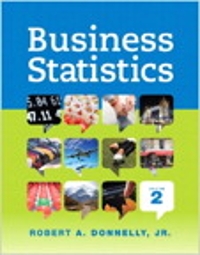Question
Please help me answer the questions of this case (mentioned in tutor instructions). Product Shortage during COVID-19 In early 2020, a new coronavirus was spreading
Please help me answer the questions of this case (mentioned in tutor instructions).
Product Shortage during COVID-19 In early 2020, a new coronavirus was spreading across the world. It was first detected in China and reported to the World Health Organization (WHO) on December 31, 2019, as unknown pneumonia. The virus spread quickly and was soon detected in over a hundred different countries including Korea, Japan, Italy, Iran, and the United States. The WHO named the virus "SARS-CoV-2" and the disease it created "coronavirus disease 2019", or COVID-19. The virus spread was declared a public health emergency of international concern (PHEIC) by the WHO on January 30, 2020. There had been five previous PHEIC declarations since 2009the 2009 swine flu pandemic, the 2014 polio declaration, the 2014 Ebola outbreak in Western Africa, the 2015-2016 Zika virus epidemic, and the ongoing Kivu Ebola epidemic. Under the 2005 International Health Regulations, countries and states were required to respond promptly to a PHEIC declared by the WHO. In the case of coronavirus, the international community requested US $675 million to help protect states with weaker health systems. But, the virus kept spreading across the globe, and on March 11, 2020, the WHO declared COVID-19 to be a pandemica global outbreak. The Virus Explained Coronaviruses had nothing to do with the corona in the eyes. Instead, they were a large family of viruses that commonly existed in people and many different animals such as cats and bats. But, each animal species (including humans) had its own coronaviruses, which generally did not affect them. It was when animal coronaviruses spread to people that disease could occur. Other diseases caused by coronaviruses included MERS and SARS. All three of these viruses originated from bats and DNA tests of the virus in different countries indicated similar sequences, suggesting a single source. As of the writing of this case, the route of transmission to human infection was still unknown. It was conjectured that the virus broke out in a large animal market in Wuhan, in Hubei province, China, indicating an animal-to-person spread, but later the virus spread from person to person. There was also "community spread" which meant it was unknown how or where someone became exposed to the virus. Symptoms, Care, and Prevention When people became infected with coronavirus, their symptoms ranged from very mild to very severe, and some people died from the illness. Older patients were more vulnerable. One big problem with COVID-19 was that people could be carriers for 14 days and show no symptoms. As such, it was more difficult to contain the disease. Clearly, healthcare workers caring for patients with COVID-19 were more vulnerable to catching the infection themselves. The same applied to other people who had close contact with patients (e.g., relatives). Additionally, travelers returning from affected locations were at increased risk of infection. To prevent catching coronavirus, nearly all health agenciesincluding the Centers for Disease Control (CDC)suggested washing or sanitizing hands frequently, keeping surfaces clean and disinfected, avoiding physical contact with others, and wearing a mask if infected or near infected people. Product Shortage Due to the rapid threat and spread of coronavirus in the US, hand sanitizers and wipes became nearly impossible to find. In February 2020, CVS and Walgreens warned consumers that there could be a shortage of hand sanitizer. A CNN article said, "US drug stores, retailers and suppliers are racing to keep up with surging interest for cleaning products as fears over coronavirus intensify. Demand for products like hand sanitizers, face masks, and cleaning wipes have spiked, according to CVS, Walgreens, and others. CVS warned it may cause supply shortages...The hand sanitizer business is about 5% of the total business. It is presently growing at a very high rate...companies are stepping up production to meet demand..." The CNN article then cited Clorox Chief Financial Officer Kevin Jacobsen as saying, "We are taking up inventory levels [to] be prepared for the potential increase in demand for some of our bleach products," and Reckitt Benckiser, the maker of Dettol, and Lysol's CEO Laxman Narasimhan as stating, "We're continuing to make capacity investments to ensure that we don't run out at the peak for some of these products that we have that, frankly, consumers demand and we can't fulfill." Bloomberg reported that by March 2020, Target and Kroger started limiting purchases of hand sanitizer and disinfecting wipes to six items per person (at Target) and five items per person (at Kroger) because of widespread stockpiling. Still, shortages continued as did price gouging. The Wall Street Journal reported that third-party sellers on Amazon continued to price gouge on items facing shortages so that a 70-count container of Clorox disinfecting wipes sold for$27.99, roughly five times the typical cost. Additionally, an 8-ounce,two-pack of Purell hand sanitizer bottles was listed at $49.99, more than six times what major retailers charged. The article also reported that some firms like Purell had taken a very different tack; they were first supplied their products to more vulnerable customers such as medical establishments. How to Control Product Shortages There are many options to control product shortages. But, what are they and how do they impact consumers and disease control?
Step by Step Solution
There are 3 Steps involved in it
Step: 1

Get Instant Access to Expert-Tailored Solutions
See step-by-step solutions with expert insights and AI powered tools for academic success
Step: 2

Step: 3

Ace Your Homework with AI
Get the answers you need in no time with our AI-driven, step-by-step assistance
Get Started


